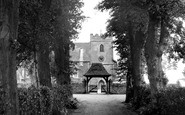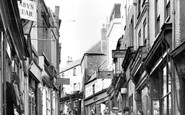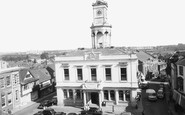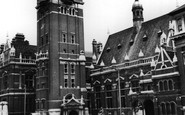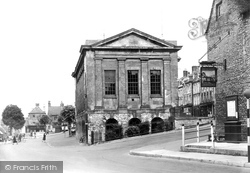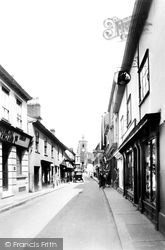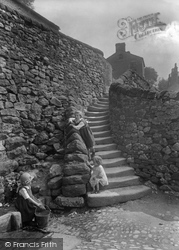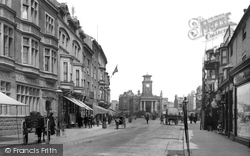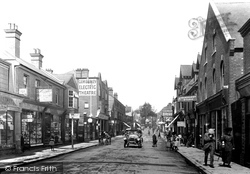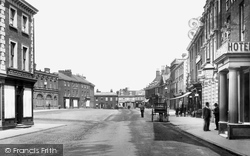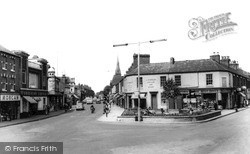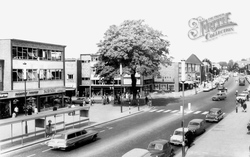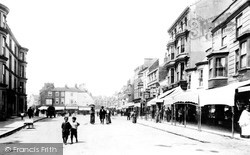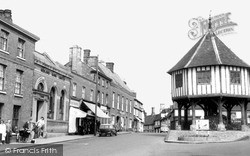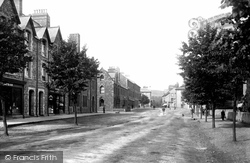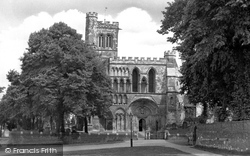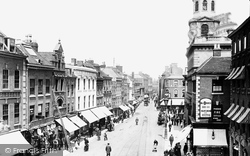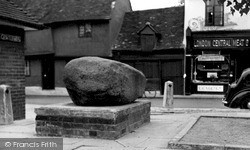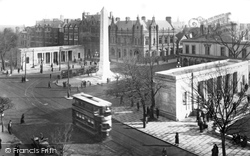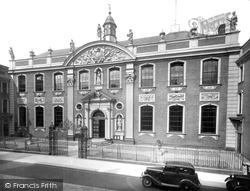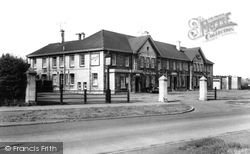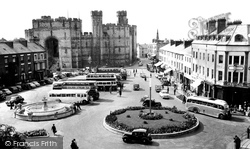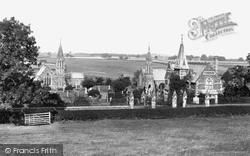Places
26 places found.
Those places high-lighted have photos. All locations may have maps, books and memories.
- Town End, Derbyshire
- Town End, Buckinghamshire
- Town's End, Somerset
- Towns End, Dorset
- Town End, Merseyside
- Town End, Cambridgeshire
- Town's End, Buckinghamshire
- West End Town, Northumberland
- Bolton Town End, Lancashire
- Kearby Town End, Yorkshire
- Town End, Cumbria (near Grange-Over-Sands)
- Town End, Cumbria (near Bowness-On-Windermere)
- Town End, Yorkshire (near Huddersfield)
- Town End, Yorkshire (near Wilberfoss)
- Town End, Cumbria (near Appleby-in-Westmorland)
- Town's End, Dorset (near Melbury Osmond)
- Town's End, Dorset (near Swanage)
- Town End, Cumbria (near Ambleside)
- Town End, Cumbria (near Lakeside)
- Town End, Cumbria (near Kirkby Lonsdale)
- Town End, Cumbria (near Ambleside)
- Town's End, Dorset (near Bere Regis)
- West-end Town, South Glamorgan
- Townend, Derbyshire
- Townend, Strathclyde (near Dumbarton)
- Townend, Staffordshire (near Stone)
Photos
23 photos found. Showing results 1,181 to 23.
Maps
195 maps found.
Books
3 books found. Showing results 1,417 to 3.
Memories
3,719 memories found. Showing results 591 to 600.
Life In The Country
I was stationed in the USAF at RAF Lakenheath. I resided at Church View, Church Road with my wife, 3 daughters, and our 3 Shelties. My oldest daughter Cindy learned to ring bells at the church and was sweet on a local boy, Robert ...Read more
A memory of Hilgay in 1973 by
More Growing Up In Dovercourt
I was born in Dovercourt in 1946, and lived there until 1957. My father, too, worked on Parkeston Quay, but moved to New England depot in Peterborough in 1956 - mother and I followed once I had taken my 11-Plus exam. ...Read more
A memory of Dovercourt in 1957 by
Old High Street Summer Of 1966
The old High Street was a hive of activity especially in the summer months, I remember the Acropolis coffee bar which was run by a Greek family including Archie Aggro who was a very tough character and stood no ...Read more
A memory of Folkestone in 1966 by
Day Trips To Brecon
As a child growing up in the mining village of Cwmtwrch in the 1940's and 50's, I enjoyed the family day trips to the cathedral town of Brecon, especially in summer. The public bus would take us from Ystradgynlais to Brecon,a ...Read more
A memory of Brecon by
Basingstoke Town Hall
I remember the Town Hall from the late 1950's - 1960's. My father, the late Dr Frank Foden MBE, used to be a lecturer at what was then Basinstoke Technical College. He used to write a pantomime each year for staff and ...Read more
A memory of Basingstoke in 1957 by
Saturday Nights In The 60s
How lucky were we, who were teens in the 60's. We had the Beatles, Stones and couldn't even imagine there would be anything like rap . Like most of my friends, my first venture into Carlisle night life was at Bonds in ...Read more
A memory of Carlisle in 1965 by
Wandle Road
Although I was born in Newcastle on Tyne, I came to Croydon when I was nine - about 1958. My maiden name was Fawley, and my parents (Ron and Irene) had a sweet and general shop at 6 Wandle Road. It was near the swimming pool in Scarbrook ...Read more
A memory of Croydon in 1958 by
Wood Hatch, Western Parade
This photo is of the shops in Western Parade, Woodhatch, Reigate. Also in the picture, partially obscured by the trees, is The Angel public house. Woodhatch is a suburb of Reigate, about 2 miles due south from the town ...Read more
A memory of Reigate in 1955 by
Greystone Cottages
My earliest memories are living in no 6 Greystone Cottages. We had no inside loo and had to go to the end of the terrace for the loo. We moved to Hillary Close, Salterbeck for a while to allow modernisation to take ...Read more
A memory of High Harrington in 1953
The Mentone Hotel, The Parks, Minehead
I was born in Birmingham in 1943. My parents and my aunt and uncle (Les and Beat Bradshaw) purchased The Mentone in The Parks around 1949. A double decker bus ran over my leg directly outside Minehead Hospital. ...Read more
A memory of Minehead in 1949 by
Captions
5,054 captions found. Showing results 1,417 to 1,440.
One of the highest towns in Oxfordshire, Chipping Norton gets the 'Chipping' in its name from the Saxon word for market.
Diss, this small, stylish town on the Suffolk border, evolved around a six-acre pool called Diss Mere, which penetrates almost to the edge of the main street.
In this town we will find a fascinating mixture of alleyways, courtyards and shambles.
The towered and porticoed Town Hall which closes the vista, a fine Classical building of 1834, subsequently lost its tower and has now been completely demolished: this is a great loss to the town's architecture
Originally called Cambridge Town, in honour of the Duke of Cambridge who founded the Army Staff College here, its name had to be changed to avoid confusion within the postal service with its university
This is the most central town in Norfolk. This view shows the varied façades of the buildings fronting the market place. The building next to the King's Arms Hotel on the right is a good example.
Beyond Victoria Square the town expanded along Gateford Road and Carlton Road towards the railway station, which opened in 1850; it is stone-built in a Jacobean style.
The central thoroughfare of the New Town of Hemel Hempstead, in the prosperous mid-sixties when we'd reputedly 'never had it so good'.
The old town is in fact one mile inland from the sea, where in 1119, Walter de Grant founded an Augustinian priory.
The entire heart of the town has been moved over the hill to a new site, so that the little that remains of the old High Street is now totally run down.
This pleasant market town sits on the road from Thetford to Norwich, and was once a resting place for pilgrims – it still has a fine Guild Chapel dedicated to St Thomas à Becket.This well-maintained timbered
The new seaside resort was mostly laid out south of the old town on flatter land between the Lower Town, largely destroyed by fire in 1791, and the sea.
This view looks towards the Town Hall. It cost one penny to travel the length of New Street by horse-drawn omnibus, while a Hansom cab cost somewhat more.
The name of the town does not refer to any beach, but comes from the Old English word 'beck', meaning 'stream'. Clayhithe was the harbour of Waterbeach; the word 'hythe' means 'landing-place'.
King Henry I founded an Augustinian priory here in 1131, built a palace and established a new market town that rapidly became a place of considerable importance.
This view looks along Foregate Street; the bridge carrying the Great Western Railway lines to Hereford and South Wales can be seen in the background.
It is said that the town took its name from Lady Roysia's Stone, and that the stone itself was the base for the Market Cross.
Here we see the obelisk and twin colonnades of the town's war memorial in the year it was consecrated.
But the most impressive Victorian building in Sheffield was the new town hall on the corner of Surrey Street and Pinstone Street, where an area of old housing had been demolished to make way for
Incredibly, the Guildhall only narrowly escaped demolition in the 1870s, when Alfred Waterhouse (architect of Manchester Town Hall) presented a plan for its replacement.
The Strangeway Estate had been bought around 1859 for the purpose of building a gaol and these courts.
Situated in Rockingham Road, this grand building soon became a major landmark of the nascent industrial town when it appeared on the scene in 1936.
The great castle of Edward I overpowers this scene as, of course, it was originally intended to do, and its distinctive polygonal towers distinguish it from other castles that Edward built.
As we leave the town in an easterly direction towards Skelton, our last view of Guisborough, and the resting place of generations of Gisborians since being opened in 1872, is the town's cemetery.
Places (26)
Photos (23)
Memories (3719)
Books (3)
Maps (195)



